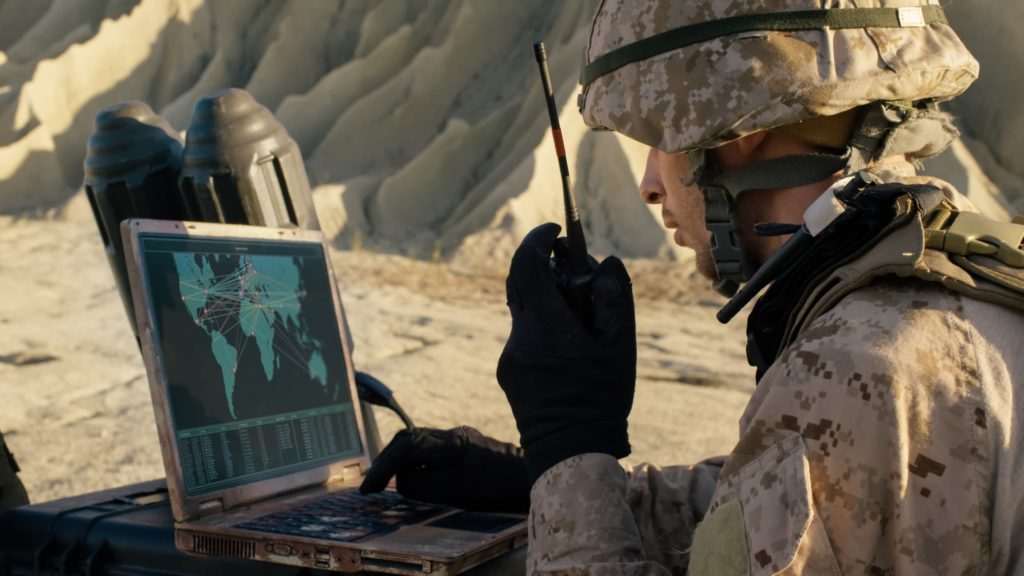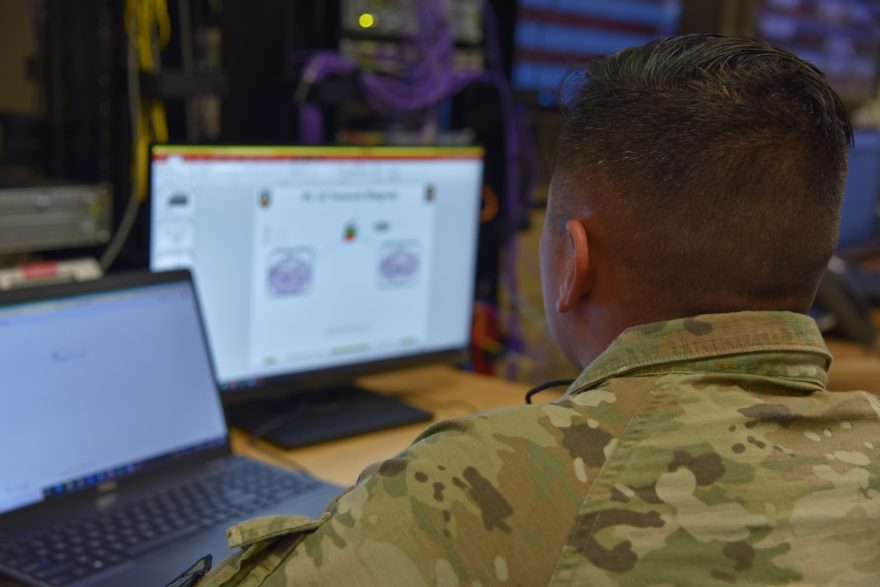Procurement Integrated Enterprise Environment (PIEE) is the DoD’s one-stop shop for procurement capabilities. It provides single sign-on and account management tools and streamlines operations and data management.
The PIEE system hosts applications such as Contract Administration Service Directory, Shared Data Warehouse single sign-on, commercial item determination, audit tracking and action tool, delivery schedule manager, and final contract closeout. It also supports e-tool development and implementation.
PIEE is the Department of Defense’s one-stop shop for procurement functions. It offers a complete set of tools that automate, reduce manual data entry, and minimize administrative tasks from pre-award through contract closeout. It also supports DoD’s goal to move to a paperless acquisition process.
PIEE provides secure online access, storage, and retrieval of all procurement-related documentation using the latest technologies. These include contracts, modification, receiving, and invoice reports. In addition, it enables the creation of award reports and auxiliary documents.
With built-in checks, controlled access, workflows, data pre-population, and error tracking, PIEE ensures contracts, invoices, and payment disbursements are as accurate as possible. It also supports the DoD’s goal of reducing interest penalties due to lost or misplaced documents.
To facilitate DoD’s goal of a paperless acquisition process, PIEE allows contractors to submit electronic Invoices, receipts, and acceptances. It also creates a virtual folder that combines the three documents required to pay a Vendor.
In support of the e-commerce program, PIEE has an Electronic Commercial Catalog module that consists of commercial catalog data standards and validations. Its ability to search, capture and validate vendor offerings, including price and item information, will allow the Department to identify and respond to price outliers more effectively.
It also will enable DoD to track the provenance of items and component parts to reduce the risk of counterfeit goods. Lastly, it will help the Department improve its pricing and purchasing decisions by providing raw data for data analytics to flag high-risk items.
The Department is proposing to amend the Defense Federal Acquisition Regulation Supplement (DFARS) to replace the Defense Contract Management Agency (DCMA) eTool application used to report loss of Government property with new capabilities developed within a secure, single, integrated system: the Procurement Integrated Enterprise Environment (PIEE). This new capability will provide the DoD end-to-end accountability for all GFP transactions.
What are the 2 advantages of PIEE?

Procurement is a critical part of any business. It drives down costs, improves quality, and reduces risks. Without it, most businesses would struggle to function at a high level.
A good procurement management system integrates all the processes related to purchase orders, invoices, and vendors. This makes it easier for procurement teams to access vital data that can help avoid late or double payments, maintain vendor relationships, and take advantage of discounts.
Integration also helps ensure that different systems can communicate with each other and exchange information seamlessly. This eliminates the need for a separate system for each process step, saving time and money.
The PIEE suite includes several modules designed to make the purchasing process more efficient and effective. They include EDA, which provides secure online access to contract and contract modification information and auxiliary documents, such as SF 44 and warrants.
In addition to providing these capabilities, PIEE offers a variety of other tools. For instance, PIEE’s myInvoice module lets vendors track their invoice payment status.
Another tool is SPRS, which provides DoD contracting officers with a variety of past performance information about contracts. This information can include price, item, and supplier risk. It can also evaluate a company’s ability to deliver goods on time and within budget.
Finally, PIEE’s Management Reporting System (MRS) offers more than 100 canned reports that can be run against the data in its applications. This enables users to quickly create a report and submit it for review. It is a useful feature for monitoring and controlling contract performance and cost, which is important for a successful DoD contract.
Who owns PIEE?
PIEE is the US Department of Defense and the Federal Government’s one-stop-shop for procurement functions. It includes Wide Area Workflow, MyInvoice, Electronic Data Access (EDA), and other modules.
The PIEE platform enables DoD to improve its contract and administration operations while meeting affordability requirements for DOD decision-makers. It provides regulatory-based and tested capabilities for use by DCMA personnel, military services, and other Defense agencies performing post-award contract administration.
In conjunction with its Solicitation Module, PIEE has released a new capability that allows government users to post solicitations and their restricted attachments in a secure environment. This portal allows contractors to submit proposals and reviewers to receive them without printing and mailing them.
It also enables contracts to be posted with synopses. This means that the contracting officer can view all documents attached to a proposal and then decide whether to award a contract.
Besides the Solicitation Portal, there are other enhancements that are in development for PIEE. Some of these include Records Retention & Destruction, which enables government users to destroy documents and data stored in PIEE after their records retention period has expired. This capability is critical for a number of reasons: it decreases the amount of antiquated data within PIEE, enables regulatory compliance, supports meeting audit requirements, and reduces the Government’s overall legal liability.
Another enhancement is a tool that helps contracting officers determine how past performance information (PI) should be considered when awarding a contract. The PI Data Standard Tool is currently being tested and will soon be available. It enables users to perform a past performance risk analysis, including price, item, and supplier risk.
Who uses WAWF?

WAWF is the backbone of the US Department of Defense (DoD) payment capabilities. Originally fielded in 2002, WAWF uses a standards-based architecture that allows vendors to submit invoices and receive reports electronically through web entry, File Transfer Protocol (FTP), and Electronic Document Interchange (EDI).
It then routes those actions to users and systems throughout DoD to perform required acceptances or approvals and then sends results to financial systems and other interested systems using standard American National Standards Institute (ANSI) transactions. Since its inception, WAWF has been continually improved to support a variety of invoice and payment types and to improve transaction accuracy, user experience, and security.
In addition to processing ANSI X12 and FTP files, the system can also take in EDI X12 and batch EDI files. This allows DoD Vendors to submit invoices and receive reports in a fraction of the time that it normally takes, streamlining the whole process from weeks to days or minutes.
PIEE provides Government users with global access to all documents in the workflow, which streamlines processing, reduces re-keying, increases data accuracy, eliminates unmatched disbursements and payment delays, and helps DoD reach its e-invoicing goal by decreasing interest penalty payments due to lost or misplaced documents. It is also a secure and auditable system that utilizes Public Key Infrastructure (PKI) certificates to verify user identification and digitally sign documents when necessary.
In order to create a WAWF file for a specific project, select the project from the Projects screen, then choose to Create WAWF Billing Files from the Files menu. The system generates a file for each valid invoice type, including Cost Voucher, Commercial Invoice, 2N1, Combo, and Progress Payment.
Is WAWF the same as PIEE?
Wide Area Workflow (WAWF) is the system by which DoD shipments are accepted and invoiced, and it has made defense shipping far more efficient than it was just a few years ago. WAWF has also helped make essential defense initiatives like Item Unique Identification (IUID) and Radio Frequency Identification (RFID) feasible.
The Department of Defense has long depended on paper-based, manual processes for receiving shipments and processing contract payments. These processes are labor-intensive and prone to errors, which can lead to delays in payments or penalties for late payments.
In addition, defense manufacturers create incredibly unique equipment, which requires strict quality control standards to ensure compliance with the Government’s procurement requirements. To comply with those strict standards, it is crucial for defense manufacturers to have a system where they can submit their products to a Government Quality Assurance Representative (QAR) before they are shipped out of the company’s facility.
While WAWF is an effective system for reducing paper documentation and tracking assets, it does not equip vendors with the tools they need to effectively manage their RFID and UID data. This can make it difficult to meet the DoD’s data input and asset tracking requirements, resulting in delays in transactions or other complications.
In addition, WAWF has not yet been deployed with capabilities that support the GFP attachment, GFP property transfer, and property loss notification and adjudication. This is why PIEE has released the GFP Module in phases, aiming to consolidate all GFP tools and capabilities into one location that can be used by all DoD trading partners.
